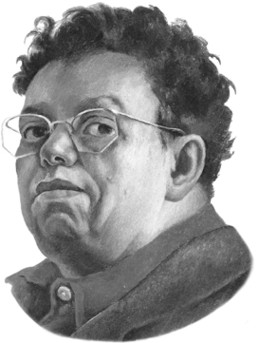A Mexican painter who was born in Guanajuato in 1886 and died in Mexico City in 1957. Along with José Clemente Orozco and David Alfaro Siqueiros, he is one of three great 20th century Mexican muralists. Diego Rivera began his studies at the San Carlos Academy with Santiago Rebull and José María Velasco. In 1907, he moved to Europe when he increased and perfected his knowledge of painting and painting techniques, first in Madrid with Eduardo Chicharro and later in France and Italy. During his stay in Europe, which lasted until 1921, he assimilated the main trends of the innovative artistic movements such as impressionism, post impressionism and cubism.
Back in Mexico and now identifying with the communist movement, Diego Rivera renounced the artistic education he received in Europe, adopted Mexican indigenous and black heritage – without forgetting European techniques – and made murals the banner of his indigenous and Marxism sympathies. With his vigorous and original style he represents the resolve and synthesis of the most diverse cultural movements: the European technique to which he owes his learned decorative structuring; the truest popular sentiment, which imbues his Mexican works of art, and his social ideology which make his art an advertising tool.
Founder of the Mexican Communist Party, Diego Rivera visited the Soviet Union in 1927-1928. Upon his return to Mexico he married the painter Frida Kahlo, who had been his model, and persuaded the Mexican government to give political asylum to Trotski (1936), which resulted in him being expelled from the Party. Between 1930 and 1934, he lived in the United States where he painted murals at the San Francisco Fine Art School, the Detroit Fine Art Institute, and the Rockefeller Center in New York, which was later destroyed for housing a portrait of Lenin. In Mexico Rivera painted the murals of the Ministry of Education, the Chapingo National School of Agriculture (his most acclaimed work), The Cortés Palace in Cuernavaca, the National Palace and the Palace of Fine Arts. A beautiful fresco completes his extensive works of art.
